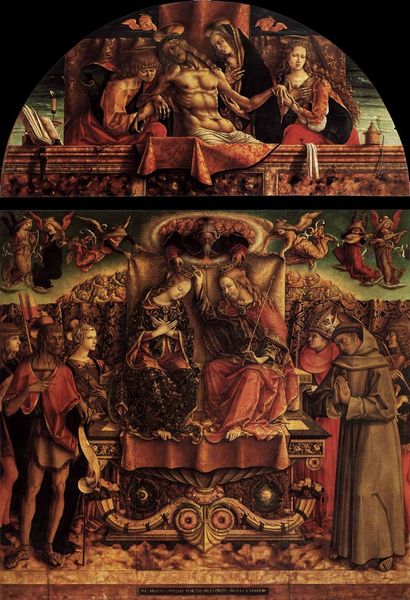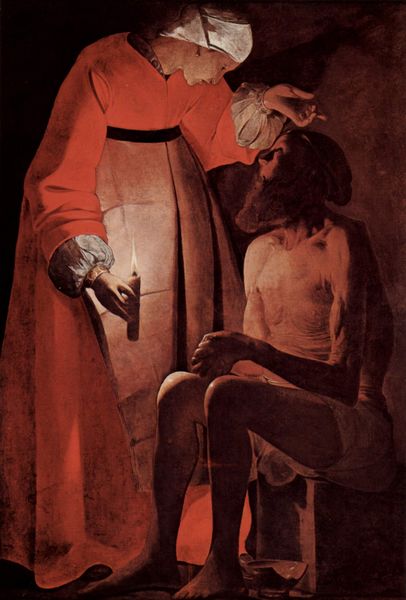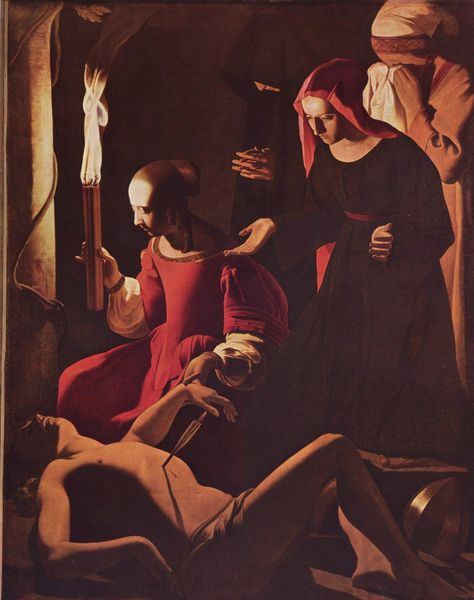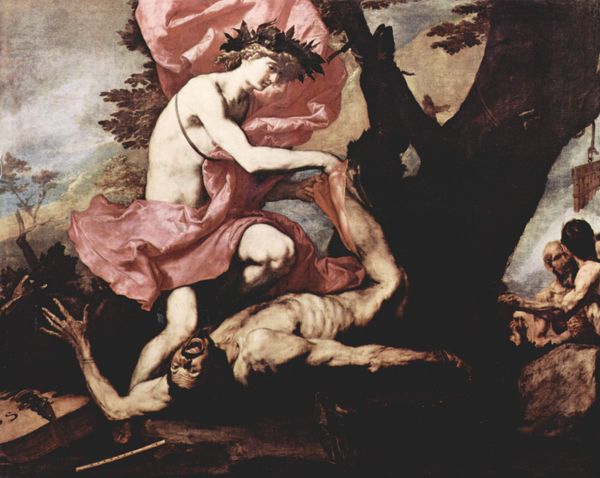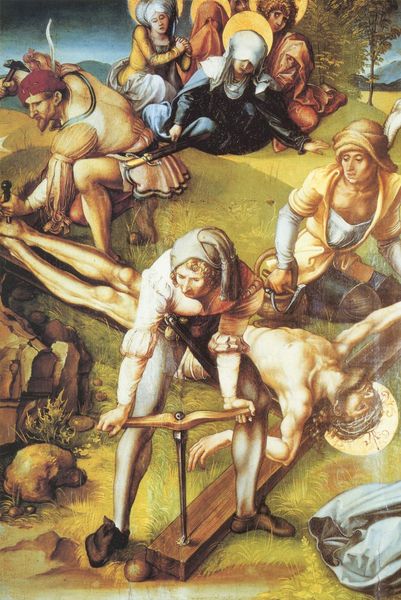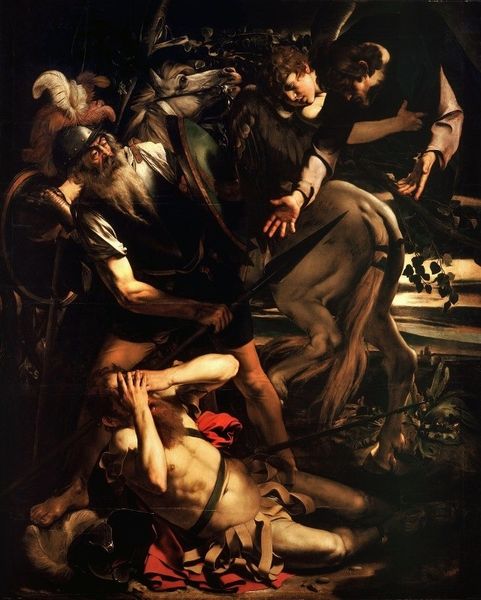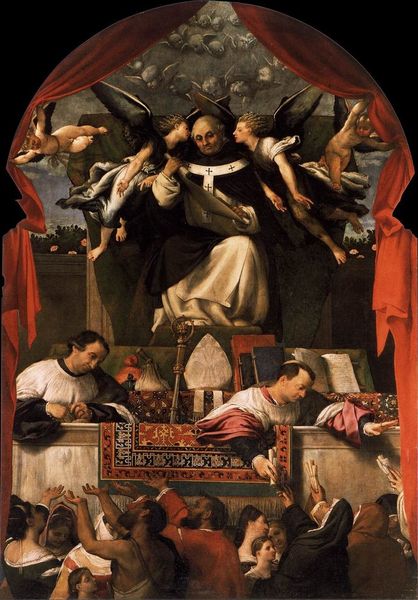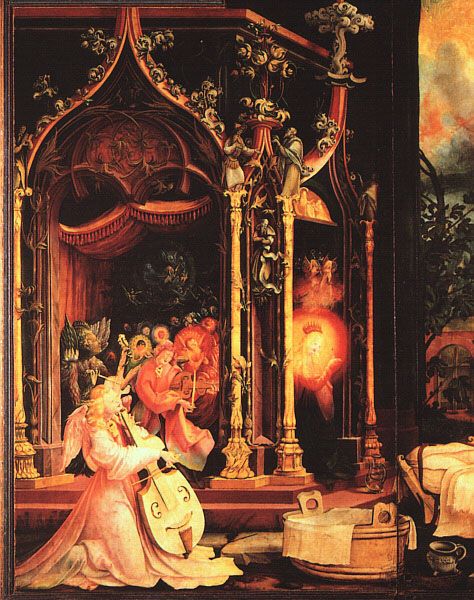
Altar of Recanati polyptych, main board: Madonna Enthroned with the Christ child, three angels, St. Dominic, St. Gregory and St. Urban 1508
0:00
0:00
tempera, painting, oil-paint
#
portrait
#
high-renaissance
#
tempera
#
painting
#
oil-paint
#
sculpture
#
landscape
#
figuration
#
madonna
#
child
#
arch
#
christianity
#
italian-renaissance
#
angel
#
christ
Dimensions: 108 x 227 cm
Copyright: Public domain
Curator: This is the main panel of Lorenzo Lotto's "Altar of Recanati Polyptych," completed around 1508. It features the Madonna Enthroned with the Christ Child, surrounded by saints, angels, and other figures. Editor: My immediate reaction is one of gentle solemnity, even though the two cherubs in the foreground inject some playfulness. The coloring feels warm, and the figures are arranged in a way that directs the eye upward. Curator: Lotto was working in the High Renaissance style here, and that classical influence is evident in the composition and the idealized figures. Altarpieces like this one played a significant role in religious devotion, particularly within the Counter-Reformation's emphasis on visual aids. Editor: Absolutely. But I think it's equally important to consider what a piece like this might mean to different viewers through time. Mary, enthroned but also presented as a mother holding her child, invites conversation about gender and power, both then and now. The painting does present an ideological perspective tied to Catholicism, which could promote specific cultural narratives about womanhood and motherhood. Curator: Certainly. The painting can be seen as a vehicle for propagating theological ideals. We can also view it within the patronage system. Religious orders or wealthy families commissioned such altarpieces to enhance their prestige and demonstrate their piety within their communities. Lotto had to follow certain expectations of his patrons when painting this altarpiece. Editor: True. That tension—between the artist's vision, the patron's demands, and the religious establishment's doctrines—is so evident here. Who is the artwork serving, what communities are able to participate in the conversation? The composition is quite self-contained in its depiction of what a holy space looked like, without acknowledging outside realities of Recanati or elsewhere. Curator: It's fascinating to think how the placement of art and the intention of the sponsors and patrons impact what these figures symbolize. The placement in churches serves to further empower religious institutions in local and global communities. Editor: For sure. Examining art requires that we examine all levels of the society from which it originates. Curator: Precisely, it has been interesting exploring this altarpiece. Hopefully our listeners now have an altered impression when seeing this painting and can carry new insights forward. Editor: It really highlights how an artwork becomes an active agent in cultural conversations when it's placed into discourse with others!
Comments
No comments
Be the first to comment and join the conversation on the ultimate creative platform.
